Luggage
An overview of the luggage that I’ve been using over the past years on my travels as a digital nomad around the world.
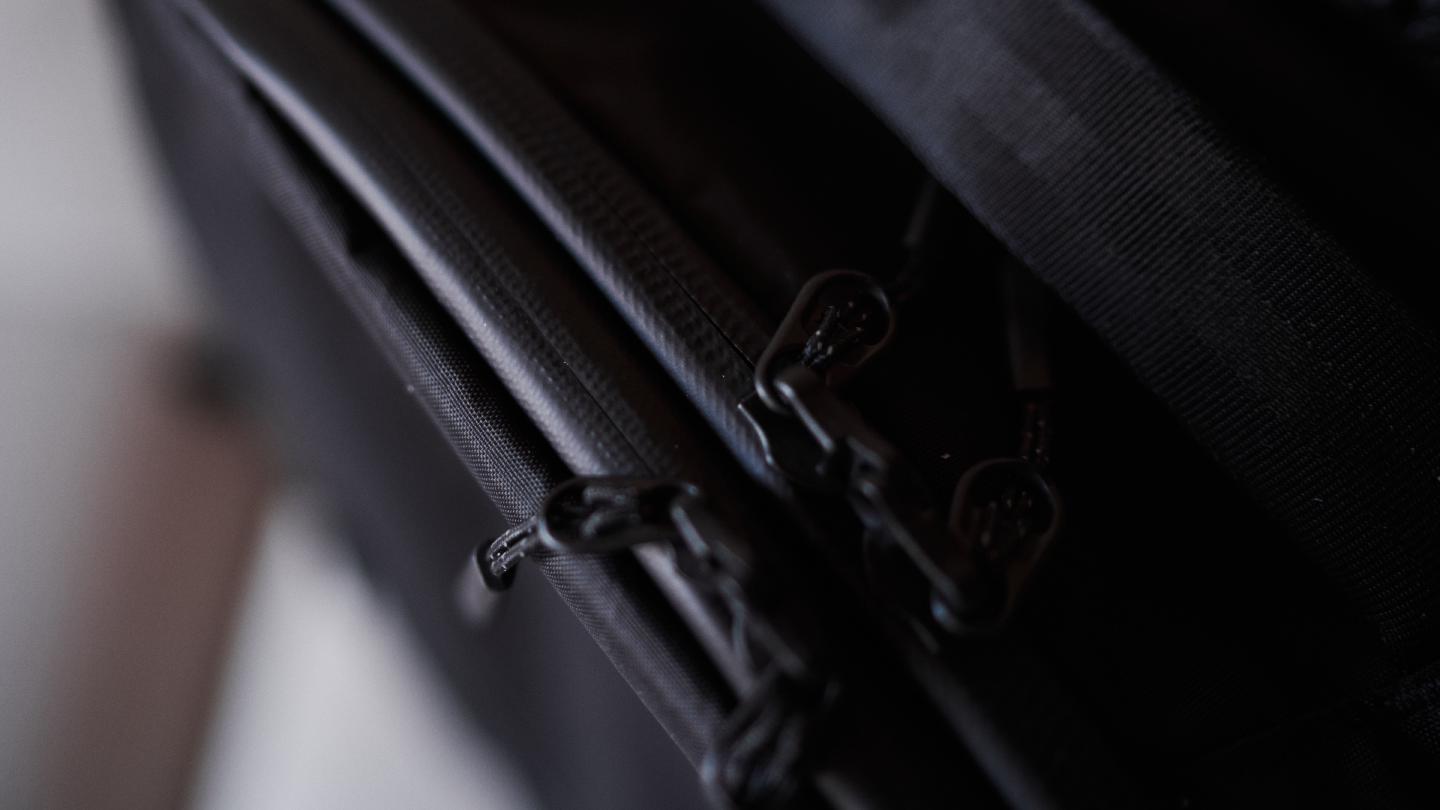
Carry-on
2022 Aer Travel Pack 3 X-Pac
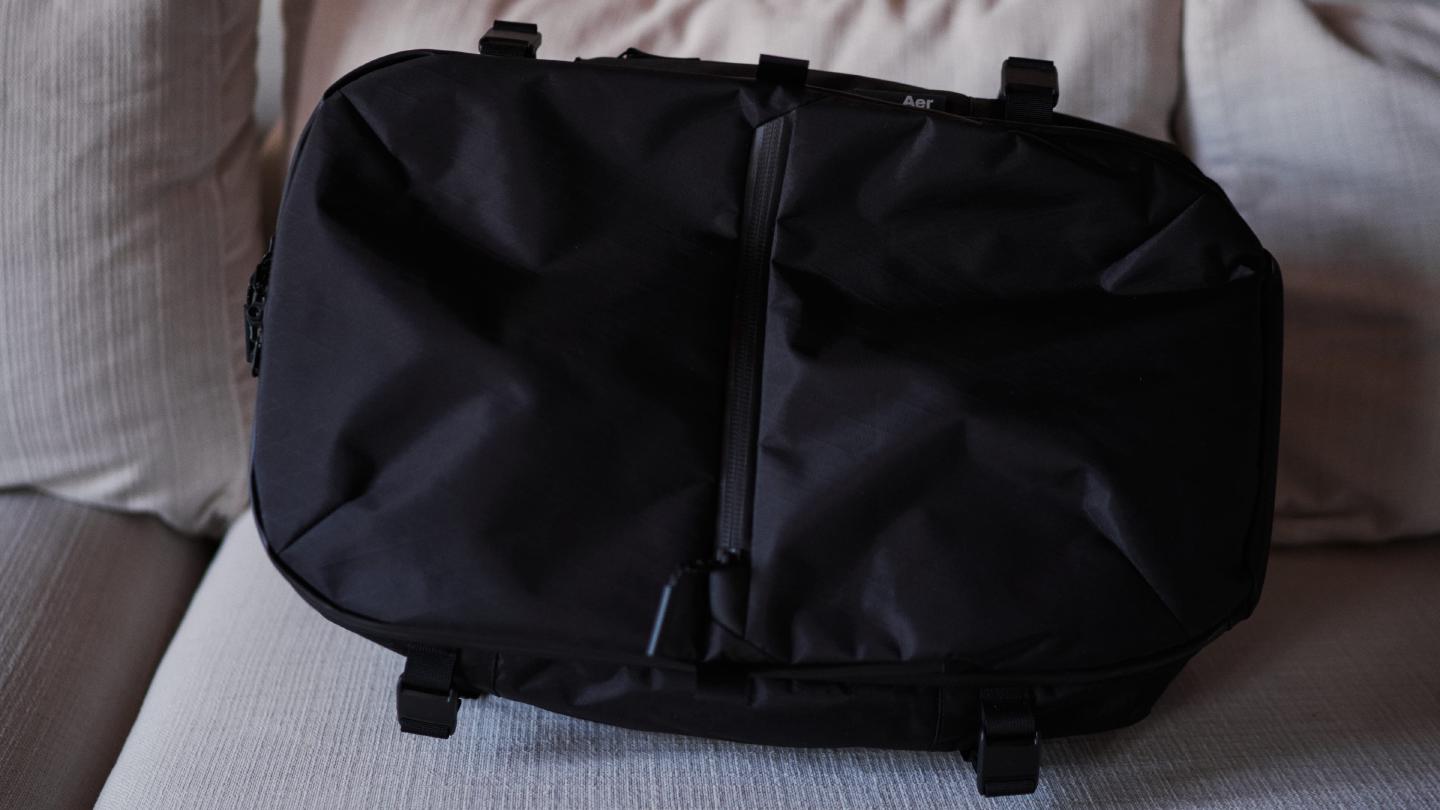
My travel backpack is a black Aer Travel Pack 3 X-Pac (35L / 2,136cu.in. to max. 40L / 2441cu.in.) with hip belt. The Aer is made from Dimension-Polyant VX-42 X-Pac sailcloth and features YKK AquaGuard zippers, as well as Duraflex buckles. The backpack sports a minimalist black aesthetic, as well as a bluesign-approved, high-visibility orange interior. It comes with compression straps with magnetic fasteners, load lifters and handles on all sides of the bag. At maximum 40 liters and 1.77 kg / 3.9 lbs the Aer is however not only smaller, but also slightly heavier than my Patagonia. This is a trade-off for the overall better form stability and comfort that the Travel Pack offers, as compared to the Black Hole.
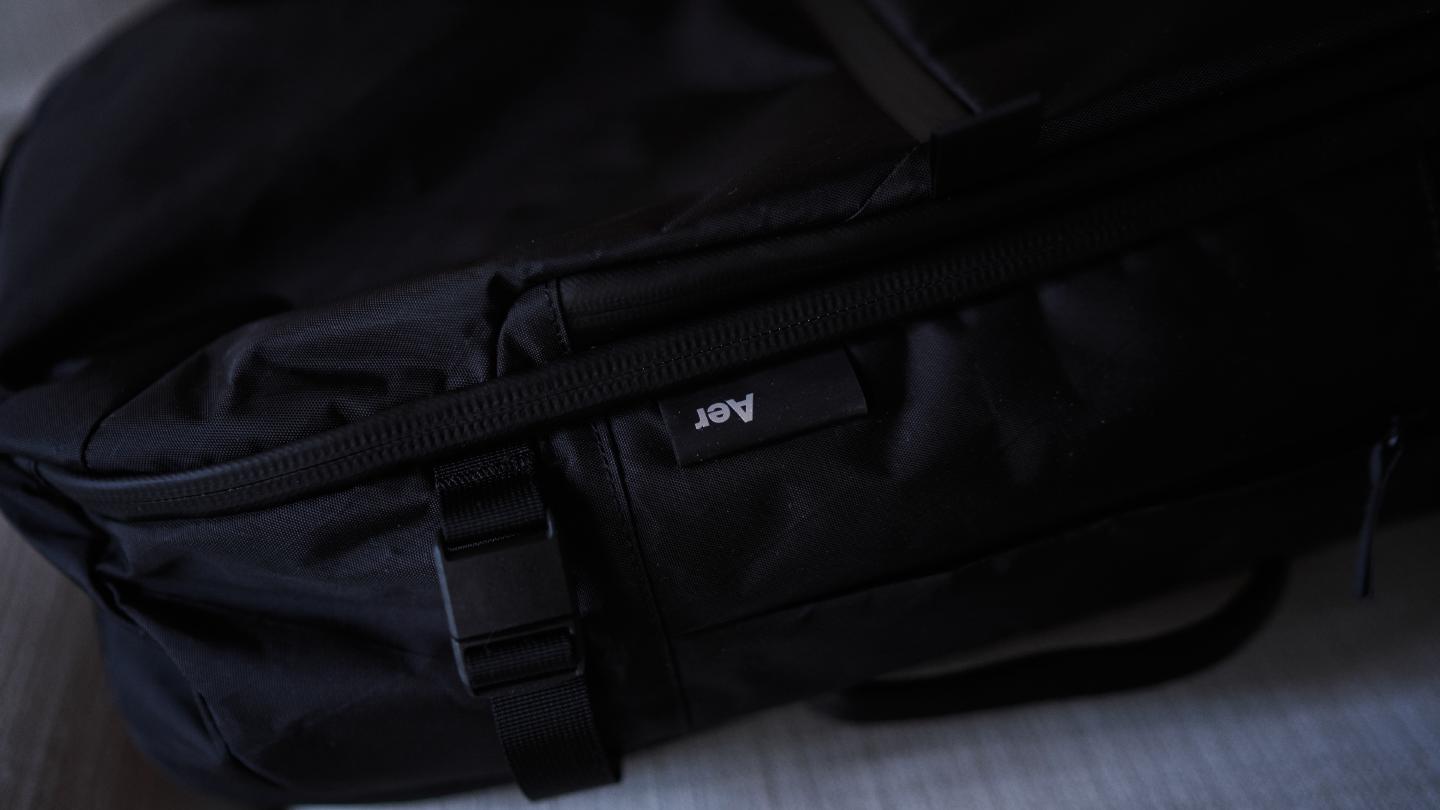
I had the first generation Travel Pack and used it on various trips throughout the world, from the Canary Islands, over Canada, to Cuba – until it got stolen. After my old backpack became way too uncomfortable to be used as a one bag backpack, I got the third version X-Pac variant of the Aer.
One of the standout features of the Aer Travel Pack 3 X-Pac is its organization system. The backpack has multiple internal pockets and compartments to keep smaller essentials neatly organized, reducing the hassle of rummaging through the bag. Additionally, a separate laptop compartment with padded protection ensures the safety of my laptop, my phone and EDC during transit.
Comfort is paramount when selecting a travel backpack, especially for long journeys. The Aer – unlike my Patagonia backpack – excels in this aspect, thanks to its padded and super comfortable shoulder straps, as well as the ventilated back panel. The straps are adjustable and feature a sternum strap for added stability, allowing for a customized fit regardless of body size. Whether navigating bustling airport terminals or trekking through streets, the backpack distributes weight evenly – and more importantly, keeps its shape – to minimize strain on shoulders and back.
The Aer sports three compartments – a front compartment for smaller items, the main compartment, as well as a laptop compartment – as well as an additional front and side pockets.
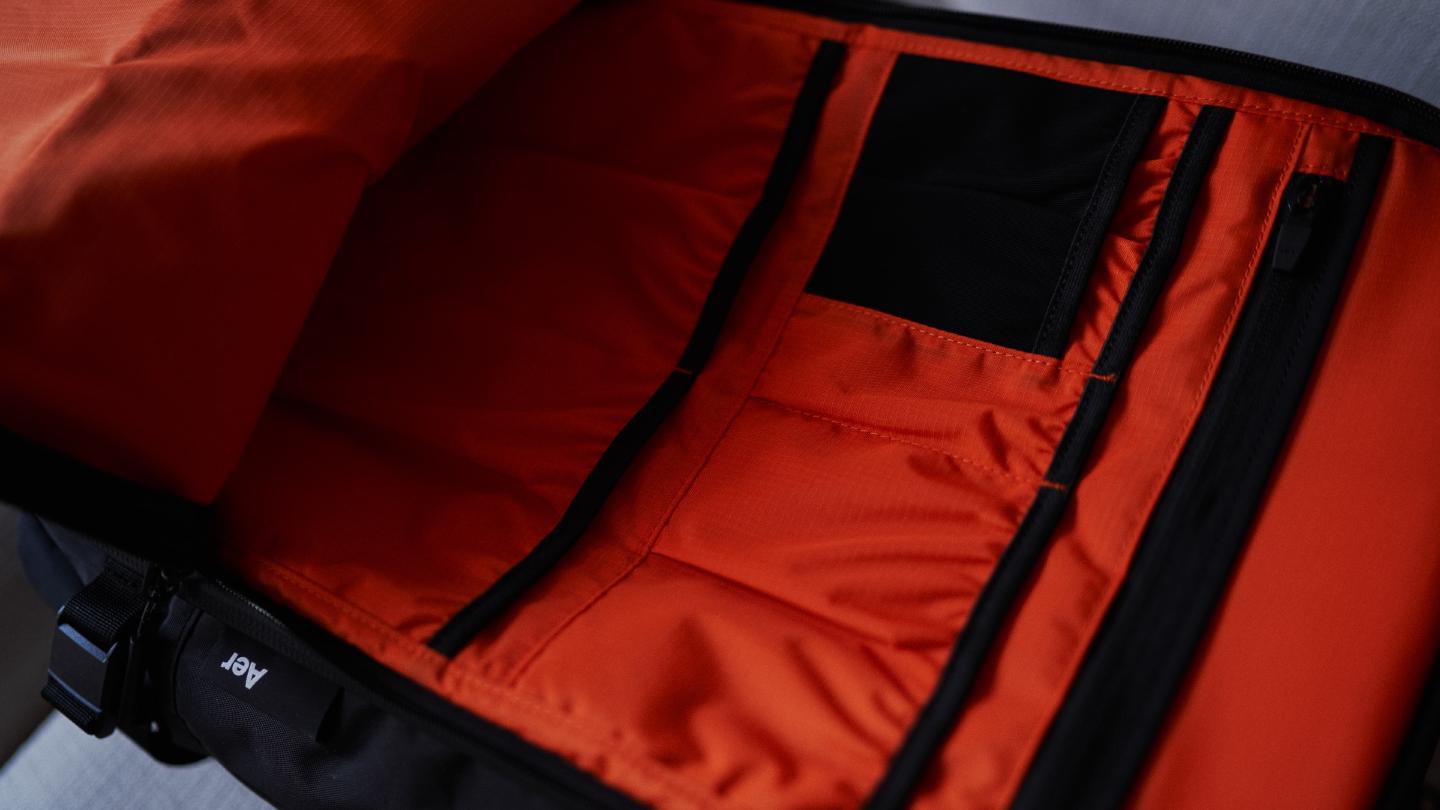
I usually put all my liquids into the front pocket and my laptop into the back sleeve for fast access during airport security checks. The front pocket also contains a strap with a clip to hook keys and other items onto. The downside of the front pocket is that it becomes pretty much unusable the moment the Aer is slightly overpacked. Especially with the X-Pac material not giving in at all.
The front compartment however is fairly large and even fits my laptop if I decide to put it in there. I have to say that I’m not a big fan of having the laptop in the rear compartment, as sometimes the pressure coming from tightly packed items in the main compartment feels a bit much on the device.
The rear compartment contains a zipper pocket and a divider that allows stowing a laptop and other flat things like magazines, books, or a tablet.
On the left side the Aer has an extendable pocket for e.g. a water bottle, a small tripod or other rather lengthy things. Unfortunately a 22" Penny board (1.9 kg / 4.19 lbs) won’t fit the pocket – but it will fit in between the bag and the side straps!
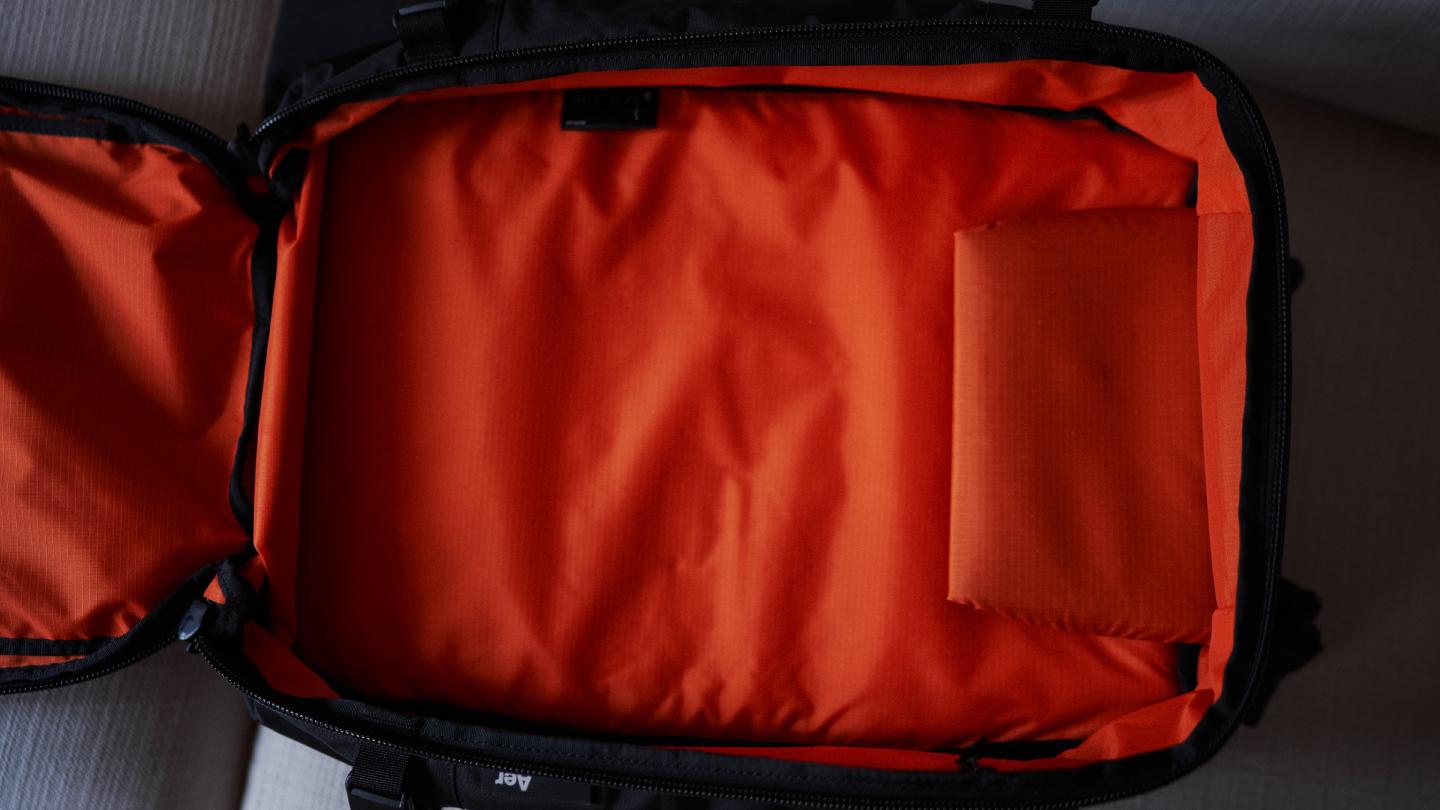
The main compartment contains two zipper pockets – one on the top, the other one on the side – and a tiny pocket that would fit an AirTag in case you decide to use one. The zipper pocket at the top bites into the main compartment’s space and covers the AirTag pocket. Nevertheless, the main compartment offers ample space for clothing and larger items, while the front-loading design allows for convenient packing and unpacking. I use one large and two small Aer Zip bags to organize and compress clothes. The reason I went with the more cumbersome to use Aer’s Zip bags over their packing cubes was the nearly 50% difference in weight – when packing lightly even 100 grams make a difference.
2018 Patagonia Black Hole MLC 45L
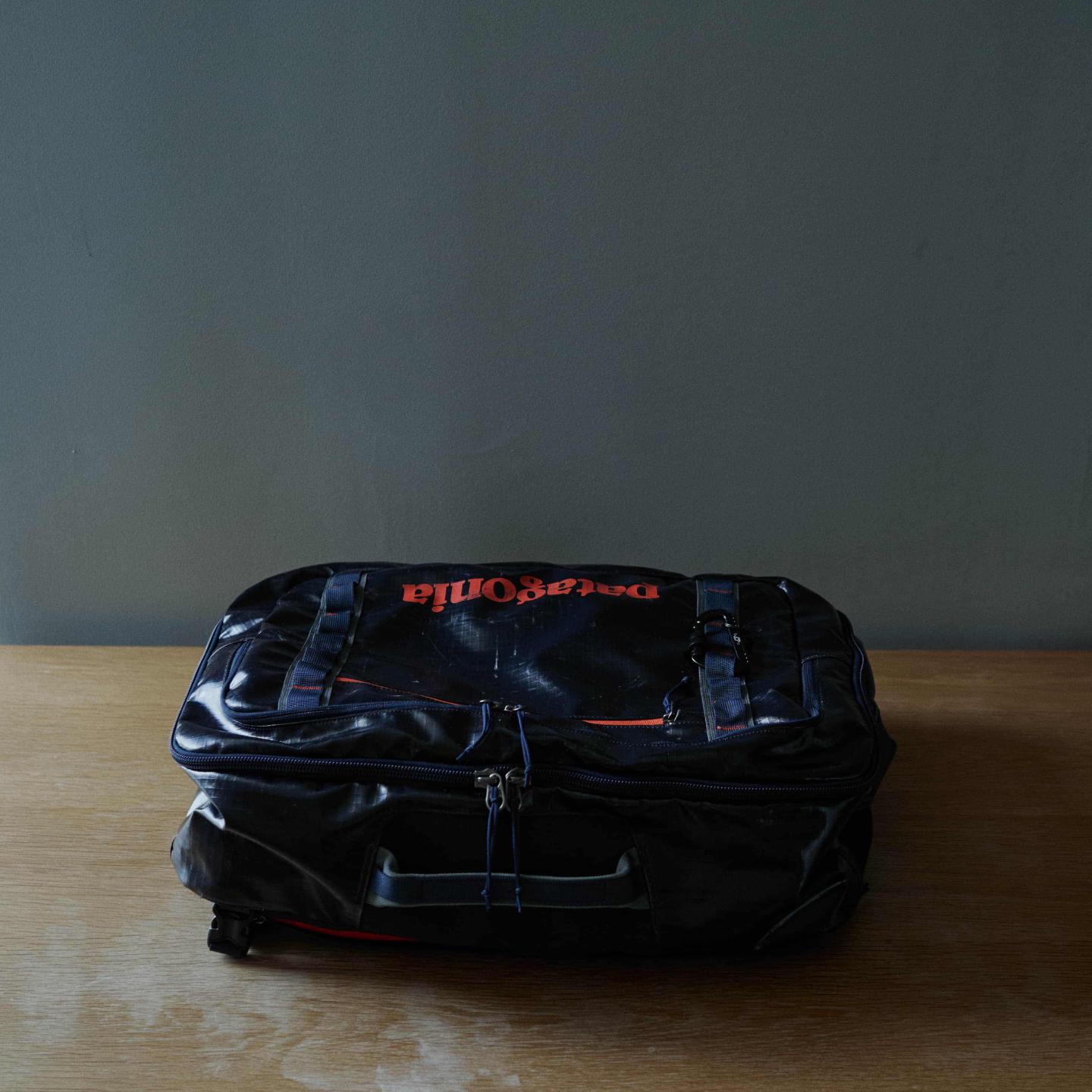
My other carry-on bag is a 2018 Patagonia Black Hole MLC 45L / 2,746cu.in., in the colors Navy Blue/Paintbrush Red, that is made from 13-ounce, 900-denier 100% post-consumer recycled ripstop polyester, 200-denier 100% recycled polyester lining, with polyurethane coating and a durable water repellent finish. The Patagonia meets carry-on size restrictions for most airline, with its size not exceeding 45 linear inches when adding length, width and height, and its weight being relatively low at 1.5 kg / 3.32 lbs.
It has a rear sleeve that is designed to slide over the telescoping handle of wheeled luggage, and it features zip-away shoulder straps that convert the bag into a backpack. I almost always use it as a backpack though and barely ever make use of the additional padded shoulder strap.
Its clamshell-opening main zippered compartment features two separate chambers, and the bag also has two exterior easy-access pockets. One additional pocket is on the padded backside, which allows storing up to a 17" laptop. The placement of the zippers allow me to use TSA luggage locks to lock them together, so that I don’t need to worry of anyone trying to open them and reach into the bag while carrying it on my back.
The Patagonia has two rows of loops on the front side, allowing me to attach additional pouches and other items using carabiners. Its shoulder straps feature an additional chest strap which also allows for adding further smaller pouches to the backpack.
As with the Aer Travel Pack 3 X-Pac, I usually put all my liquids into the front pocket and my laptop into the back sleeve for fast access during airport security checks. Similarly, I’m not a big fan of having the laptop in the back sleeve, as sometimes the pressure coming from tightly packed items in the main compartment feels a bit much on the device.
In case I exceed the sometimes ridiculously low weight limit for carry-ons and I’m being asked to check the bag in – looking at you, Jetstar! – the Patagonia allows me to neatly tuck away the absurdly uncomfortable shoulder straps and transform it to basically a rectangle with two carrying handles. However, everything inside the bag that might break will break, since the Black Hole doesn’t have any protective hard shell.
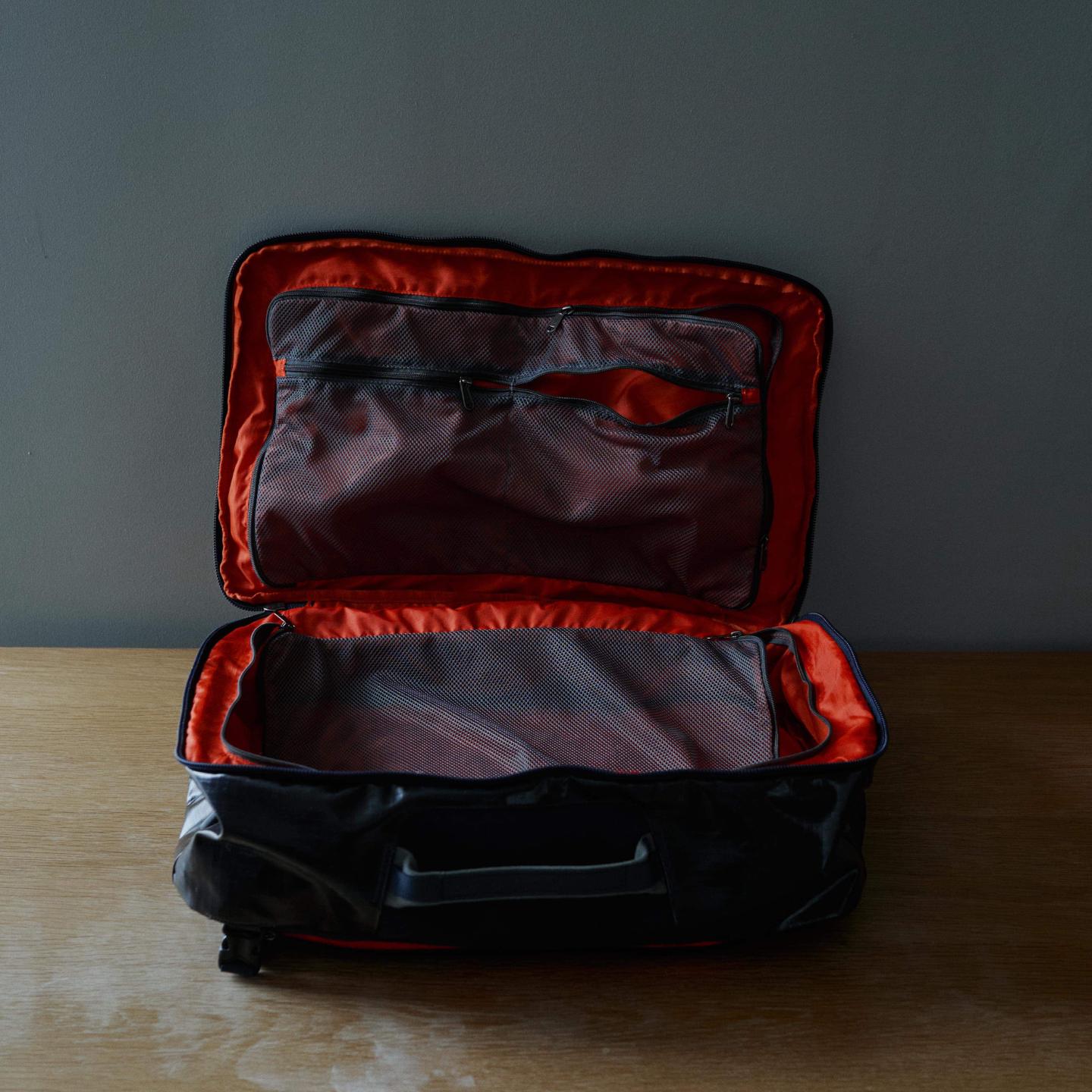
The interior is a nice neon-ish orange in color, making it easy to find even small things like USB sticks – unless they’re bright orange as well, of course. It consists of two main compartments: The large main compartment, as well as an additional in-lid compartment that has two pockets facing the main compartment, for smaller items. Both compartments are separated by a net that provides additional compression when fully packed.
I’ve been traveling around the world with solely this bag and it worked out. It’s far from being a comfortable or in any way well thought out bad. However, it fits a crazy amount of things when needed and doesn’t lose its form to become basically a ball of stuff as badly as some other backpacks might. While I wish that Patagonia would have had the Black Hole in a Black / Paintbrush Red or maybe even a Black Camo colorway, the Navy Blue color isn’t that bad and has held up quite nicely. On longer walks with the Patagonia in backpack mode and loaded with around 10kg it can become somewhat tiring to carry around, mainly due to how it distributes its weight across one’s back. The backpack feature is clearly not its intended primary mode of use, hence the shoulder straps offer little possibilities to adjust. With loads beyond 10kg even short walks can feel endless and painful. It definitely helps to attach additional pouches in the front and thereby redistribute the weight.
Tl;dr: It’s a terrible backpack but it’s spacious af. If you need the capacity and don’t have to carry it for more than an hour across an airport, the Patagonia works. The shoulder straps will disintegrate eventually, making it even more painful to lug around.
2016 Aer Travel Pack
I had the grey color variant, first generation Aer Travel Pack (33L) as my
go-to travel backpack. Unfortunately it got stolen. I hence purchased the third
generation Travel Pack as black X-Pac variant and have been using it
as my main travel backpack.
2016 Aer Duffelpack
I had the first generation Aer Duffelpack as my daily driver, when I was still
regularly hitting the gym and a co-working space. Unfortunately the
backpack got stolen. Since I don’t really do either of these activities anymore,
I didn’t have the need to purchase another one.
2021 Aer Travel Sling 2 X-Pac
My “personal item” for longer trips is the black Travel Sling 2 X-Pac by Aer. It is made of VX-42 X-Pac sailcloth, features a Duraflex fastener, YKK AquaGuard zippers and offers 12L in volume. It stores my EDC items, portable computers, liquids, as well as all other travel related things (passports, tickets, pens, notebooks, maps, a physical book). It has three individual compartments, with the main one featuring eight interior compartments.
I have added an ALPAKA pouch to the strap of the Aer Travel Sling, which allows me to comfortably store small items like my earphones and my wallet.
One big downside of the Travel Sling is the fact that it can only be worn comfortably on the left shoulder, making day trips with it quite painful. While the strap itself is very comfortable, the fact that its orientation cannot be adjusted is a huge downside of this bag.
2021 Aer City Sling 2
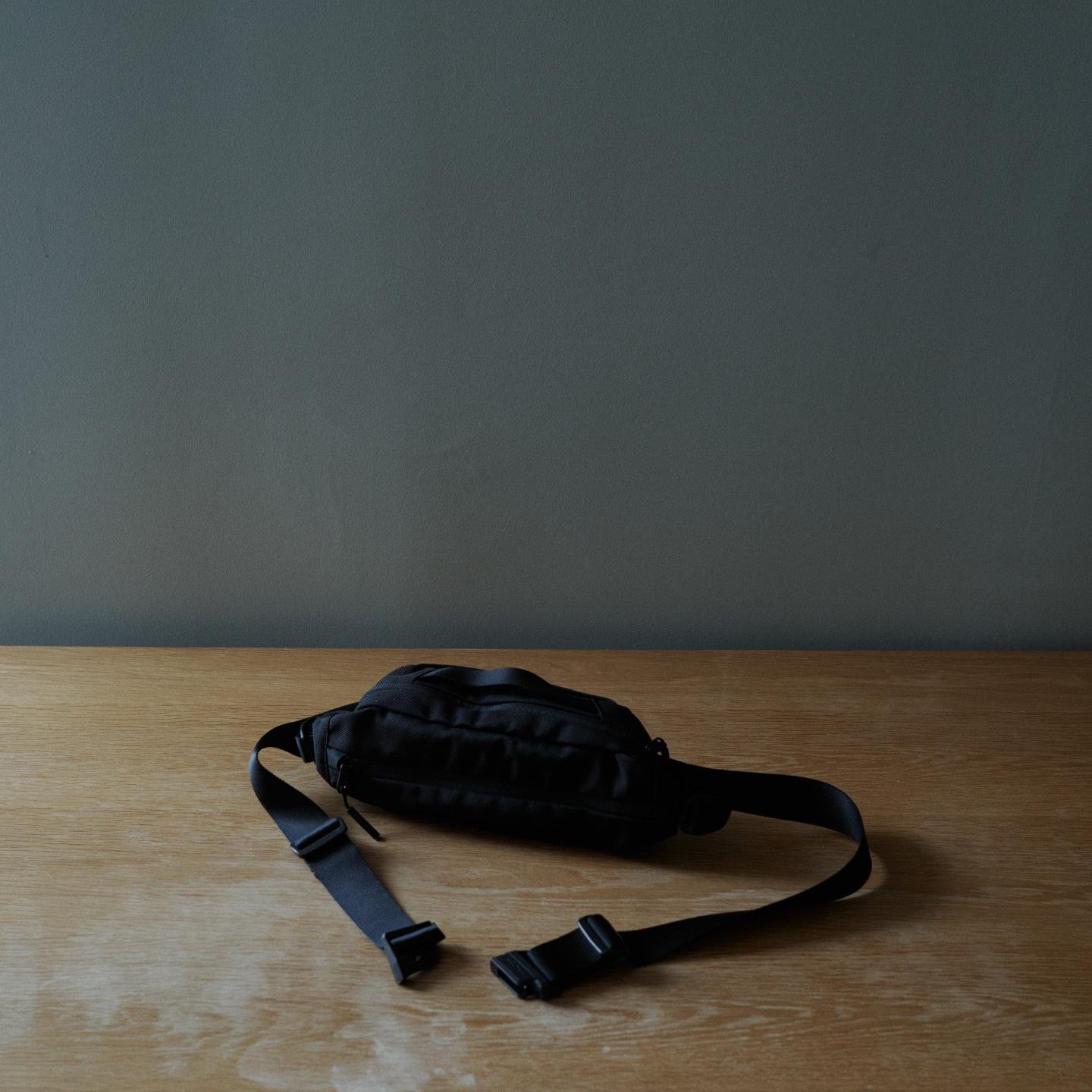
My “personal item” for shorter trips is the black City Sling 2 by Aer. It is made of 1680-denier Cordura ballistic nylon, features a Fidlock magnetic fastener and offers 2.5L in volume. It stores my EDC items, as well as all travel related things (passports, tickets, pens, notebooks, maps, a physical book). It has an internally attached strap for keys and contains of three individual compartments, with the main one featuring six interior compartments.
Pelican
TODO
Check-in
2018 Billabong 110L Booster Travel
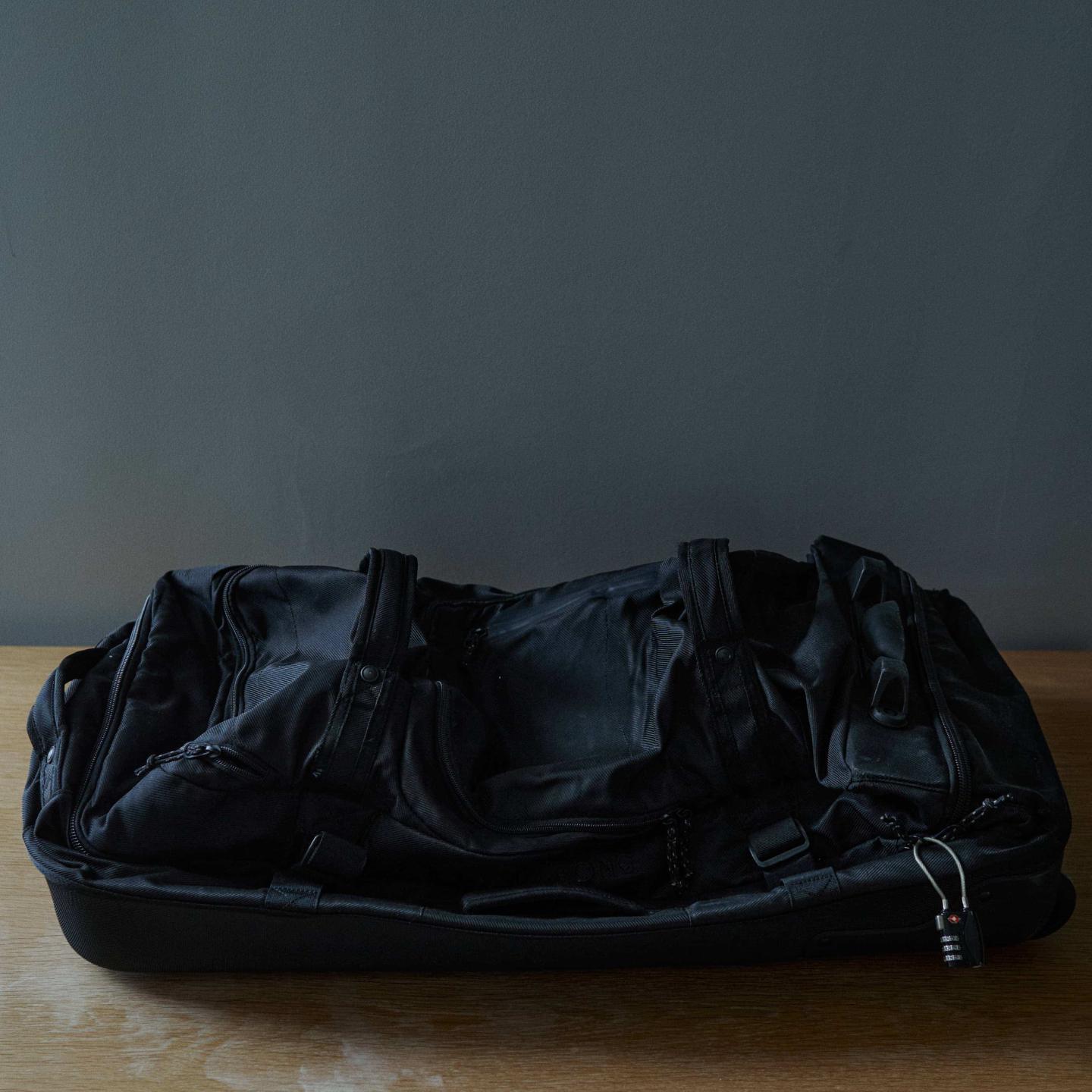
For check-in luggage I own the all-black Billabong 110L Booster Travel bag.
It’s a mix of a hard shell suitcase and a bag, featuring a molded EVA base with
rolls and a 600-denier polyester top. This way it’s lighter (~3kg) than most
110L hard shell suitcases (~5kg), yet still allows me to pack fragile things
without fear of them breaking.
The Billabong has relatively large and soft rolls and offers four compression
straps for the upper bag part. When packed lightly it’s relatively thin, but it
can extend a significant amount to fit more/larger things. Obviously one can
easily exceed check-in weight limits with this suitcase. However, being a rather
tall human being, the additional size helps with fitting shoes and jackets
without needing to squeeze them too much. With regular suitcases I usually run
out of space rather than weight.
The bag has three external pockets, which however do not offer a
streightforward locking solution. Hence I usually don’t put valuable things in
these pockets and rather keep them for things like quickdry towels and
MREs.
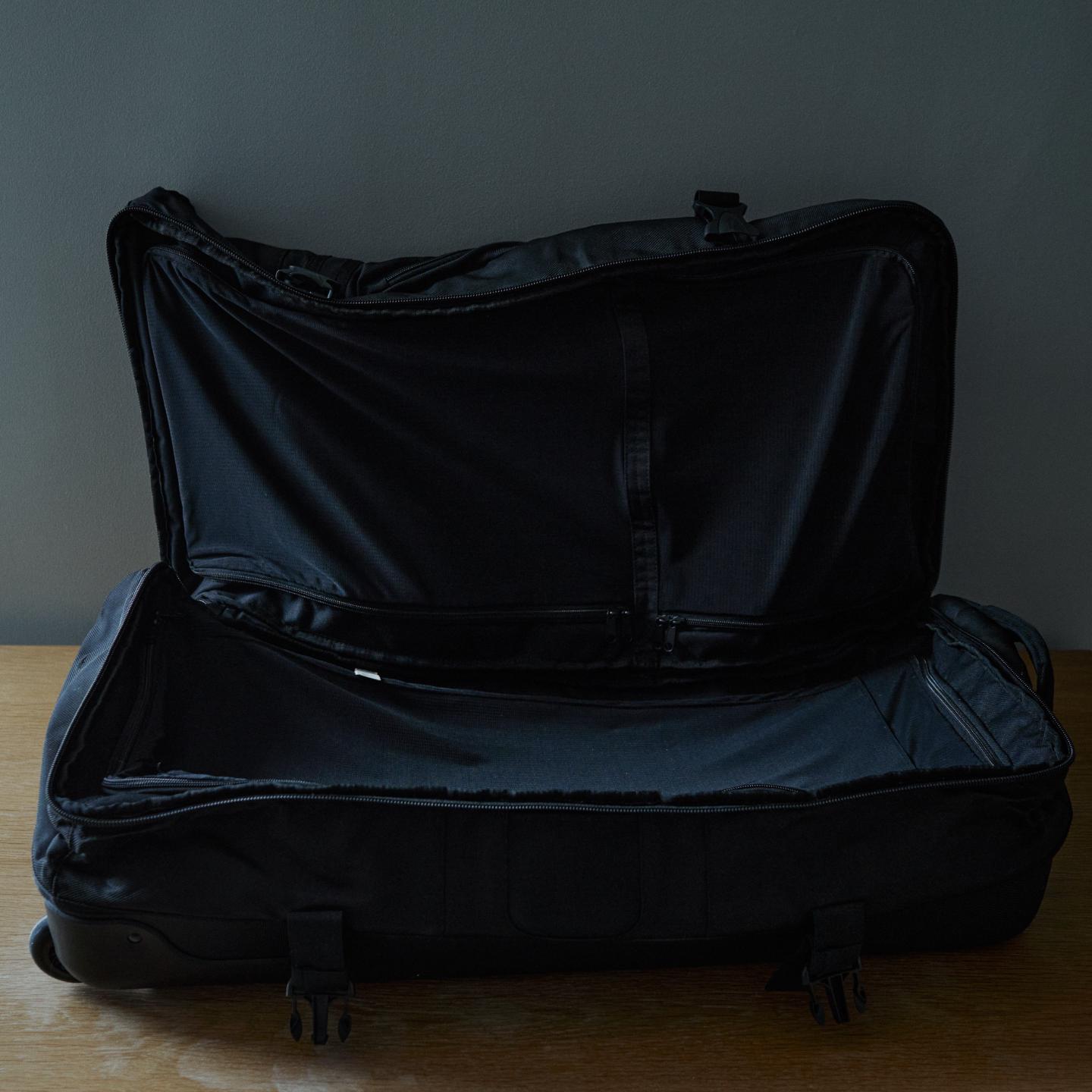
On the interior the Booster offers multiple compartments with plenty of room.
I’ve flewn around with the Billabong and the only thing that was a con was the
fact that unless the bag is filled properly it would not stand up right on its
own, requiring to always stand next to something it can be leaned against or
laid flat on the floor. I had fragile things transported in it and only a single
time a portable 15" display took a hard hit on one corner, which was probably
more of a packing fault than an actual issue with the bag. As long as everything
that’s fragile is placed in the lower hard shell area of the bag nothing bad
should happen.
Unfortunately I had to give away the Billabong and haven’t been able to find
it for purchase anymore, hence I don’t have it anymore. I do however still
highly recommend it and would get it again if I would find it for sale
somewhere.
Enjoyed this? Support me via Monero, Bitcoin, Lightning, or Ethereum! More info.